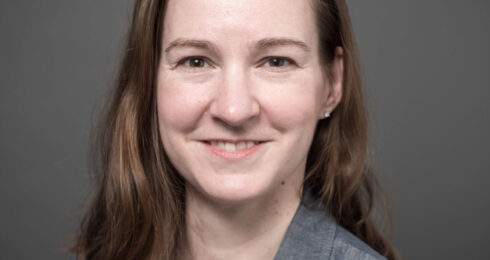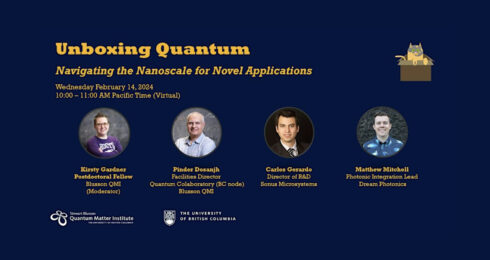A new study spearheaded by an undergraduate student at Blusson QMI reports on progress made toward fine-tuning the atomic structure of an electrolyte for use in solid-state lithium-ion batteries. The study was published today in the Journal of Vacuum Science and Technology A.
In the summer of 2023, Joan Weng—an undergraduate student who joined Ke Zou’s Group through Blusson QMI’s Quantum Pathways Program—began growing the inorganic material using the Institute’s molecular beam epitaxy (MBE) facility.
“This study is the first step in our approach to exploring the potential of MBE synthesis for lithium-ion battery materials,” said Blusson QMI Investigator Ke Zou. “It is still at an early stage, but the materials we are studying have the potential to improve the technology and make it more accessible.”
MBE is a thin-film deposition technique which allows individual atoms or molecules to be deposited onto a crystalline substrate one layer at a time, resulting in well-ordered and atomically precise thin films.
“Joan is an exceptional undergraduate student with a strong research drive. Over the summer, she successfully completed this paper and has already begun collaborating with other researchers at UBC,” Zou said. “She is poised to independently continue the project in the next year.”
Quantum Pathways is a program specific to Blusson QMI that provides summer research scholarships to first- and second-year undergraduate students interested in materials research.
Describing the process of working with MBE to grow the thin films for this study, Joan said she first prepares the vacuum chamber by introducing oxygen and other required elements into the environment.
“After the atmosphere is right, the growth starts, and we allow the heated particles in the chamber’s atmosphere to evaporate and condense on a substrate. Once the calibration process is done, we let the material rest to form ordered layers. Meanwhile, we observe the material using diffraction techniques – which, at first glance, reminded me of the aurora borealis [northern lights],” Joan said.
“I’m excited to have published my first academic paper, but what I’m most grateful for are the friends I made along the way and the incredible support and training I received.”
In future studies, researchers will attempt to introduce lithium into this material and conduct various tests in collaboration with other groups in UBC to bring the research one step closer to real-world applications.
Notably, the study draws on the expertise of several graduate students and senior researchers at Zou’s lab and others from the Canadian Light Source in Saskatoon and the Max Planck Institute for Solid State Research in Germany.
Read the study in the Journal of Vacuum Science and Technology A.
Go on a virtual tour of Blusson QMI’s MBE Facility below or here.
#ENDS#
Media contact: Shahrzad (Zad) Abbasi | 604 360 6761 | shahrzad.abbasi@ubc.ca


